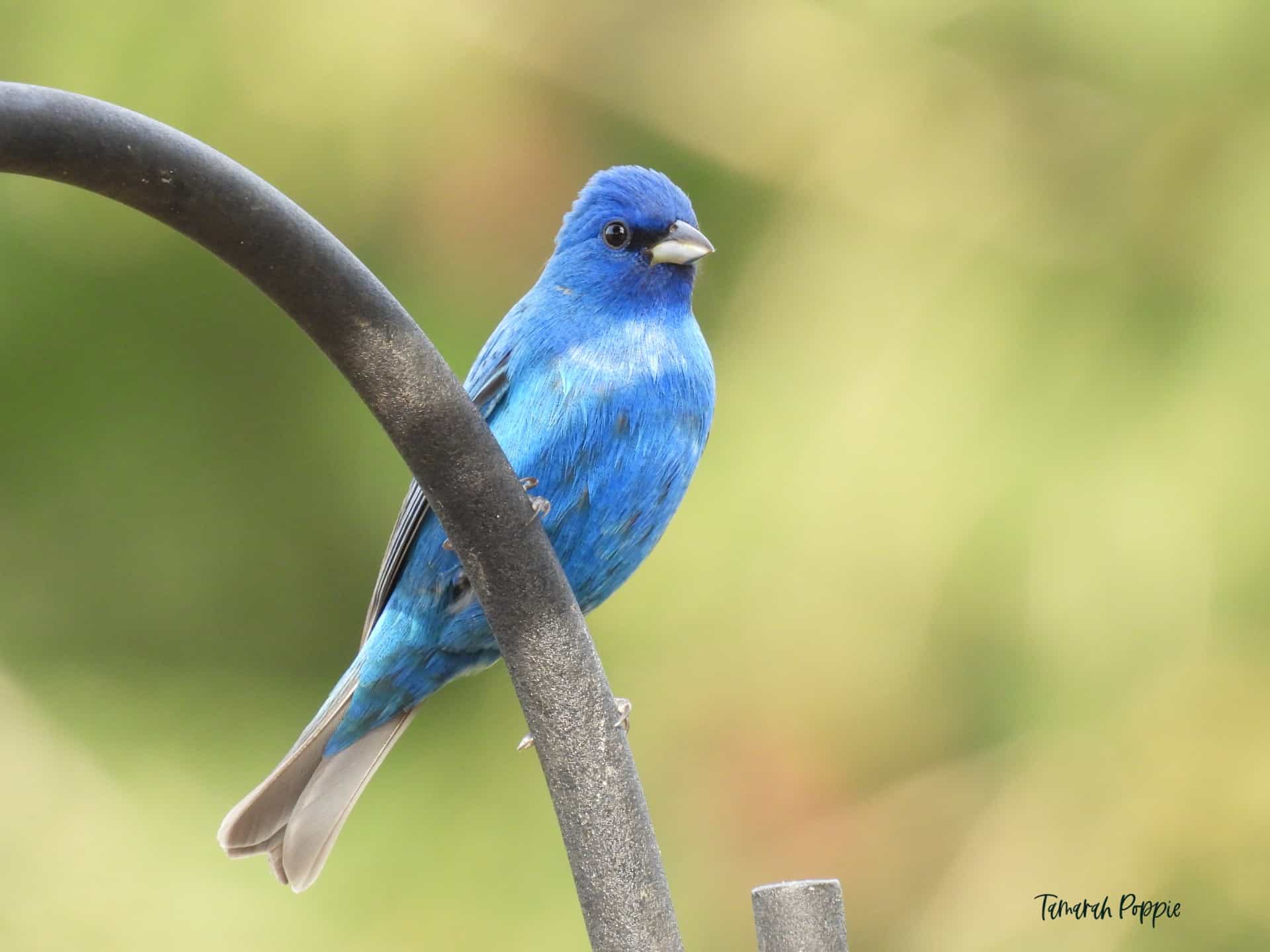Who wouldn’t want to attract indigo buntings to their yard? To see this all blue bird up close would be amazing. While they only spend part of the year in the U.S. and southern Canada, there are simple ways to entice them for a closer look.
I’ve been attracting birds to my yard for more than 25 years. Many years ago an indigo bunting happened along in my yard. I didn’t know what species it was but I had to know. The blue color was absolutely spectacular. So, I dove into my bird books and online expert resources and arrived at 5 simple ways to attract indigo buntings to your yard. Since then I see them in my yard year after year and every time seems like the first. The blue brilliance is breathtaking.
5 Simple Ways to Attract Indigo Buntings to Your Yard
- Get Wiggly with Mealworms
- Offer Small Seeds at the Feeder
- Have Water Available
- Plant Native Fruit-Bearing Plants
- Go Organic
I’ll go into more detail about how to attract them but first I’d like to share where they live, what they look like, their habitat, sounds, diet, and nesting habits.
If you’re in a hurry, feel free to skip ahead to the details around the 5 simple ways to attract indigo buntings to your yard.
Where Indigo Buntings Live
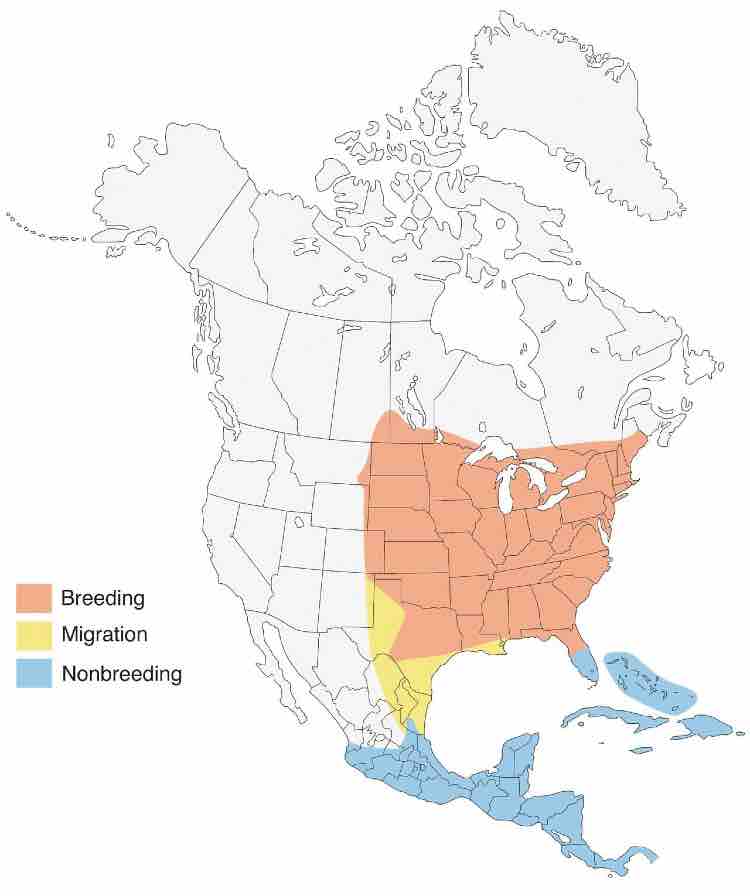
Indigo buntings are migratory birds that winter in southern Mexico, South America, the southernmost part of Florida, and parts of the Caribbean.
Spring migration occurs from mid-April to early June, and fall migration is from mid-September to mid-October.
Breeding takes place in the midwest and eastern states during the summer months (early June – mid-September).
Appearance
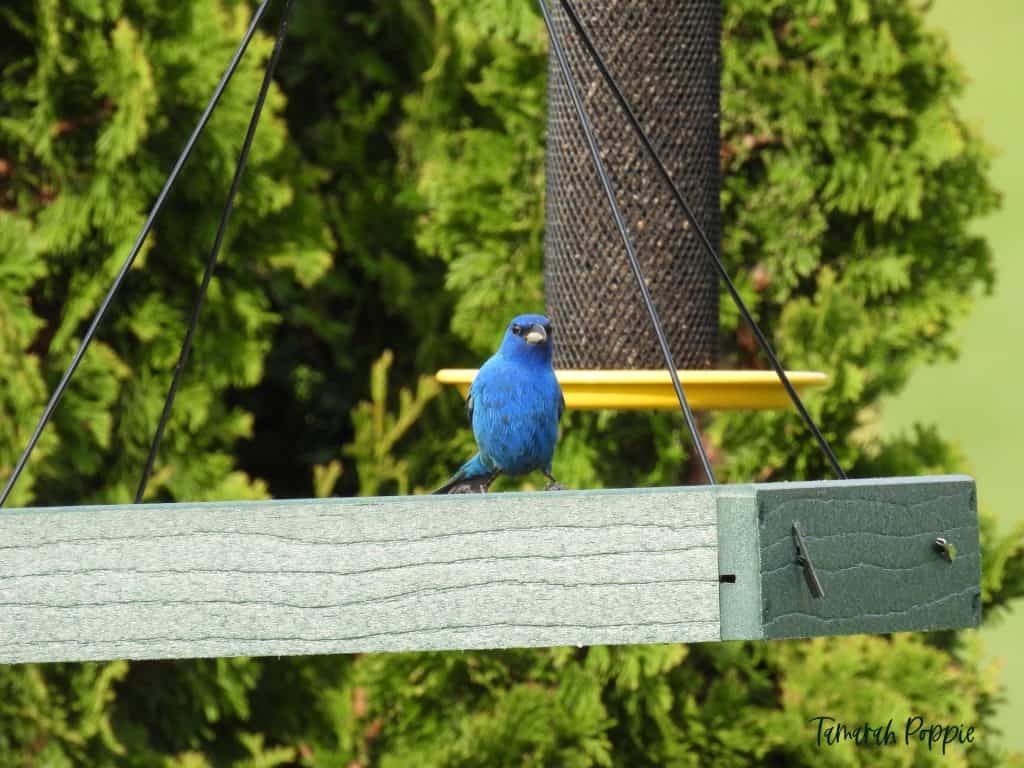
Indigo buntings are small, sturdy birds – about 5″ long with a wingspan of 7.5″ – 9″.
The male’s coloring is dependent on age and whether they’re breeding or wintering.
- The breeding males are an unmistakable bright blue with short, gray, triangle-shaped beaks, and wings of dark blue wings with a brush of tan.
- The wintering male and first-spring male are patchy brown and blue.
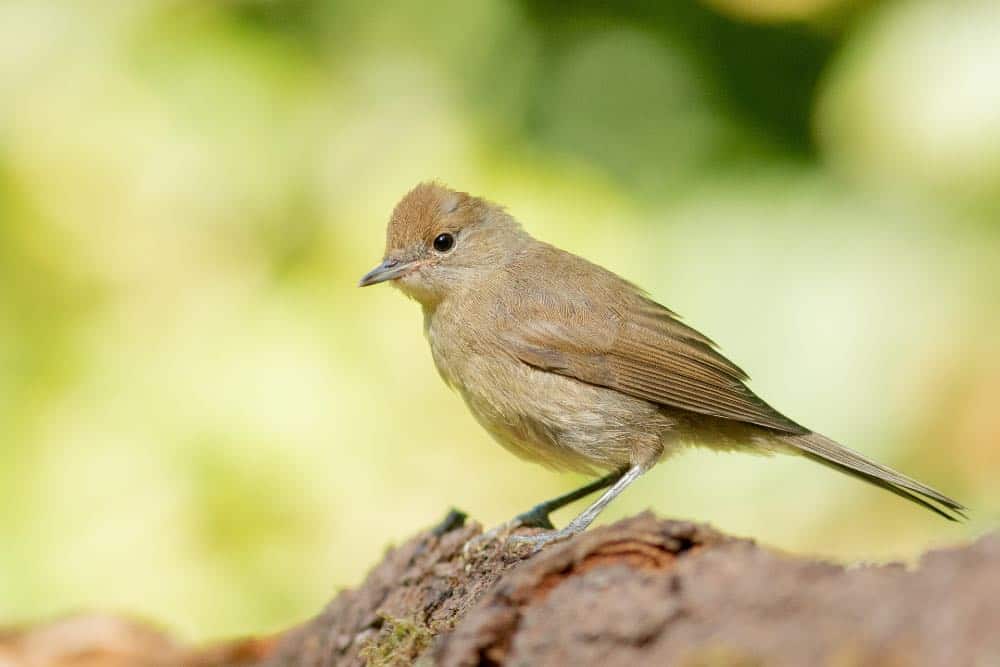
Females are the same size as the adult males but instead of the vibrant blue, they’re a soft yellowish-brown and some light streaking on the underparts.
Habitat
Indigo buntings live in brushy fields lush with tall, weedy plants, scrub, and along the edges of the woods. Often they’re seen perched on telephone wires singing for more than an hour.
This bird also can be found in clearings within deciduous woods, and edges of swamps.
During migration, it’s not uncommon to see them in flocks enjoying seed in farm fields. Other than that, they are lone fliers.
Diet & Feeding Behavior
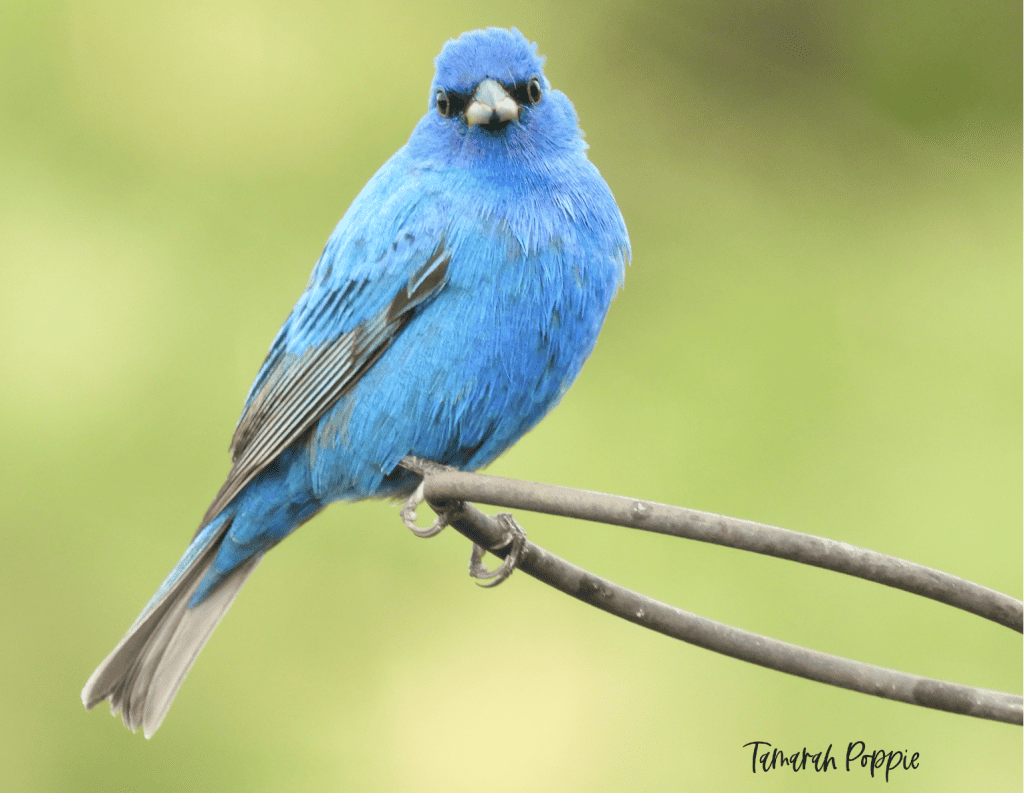
This bird primarily eats small seeds, insects, and fruits. Favorites include grasses, wheat, oats, corn, rice, alfalfa, dandelion, goldenrod, thistle, serviceberry, blueberry, blackberry, dogwood, strawberry, and elderberry.
Although not frequent, they will visit the feeder as well.
Sounds
Nesting, Eggs, and Fledglings
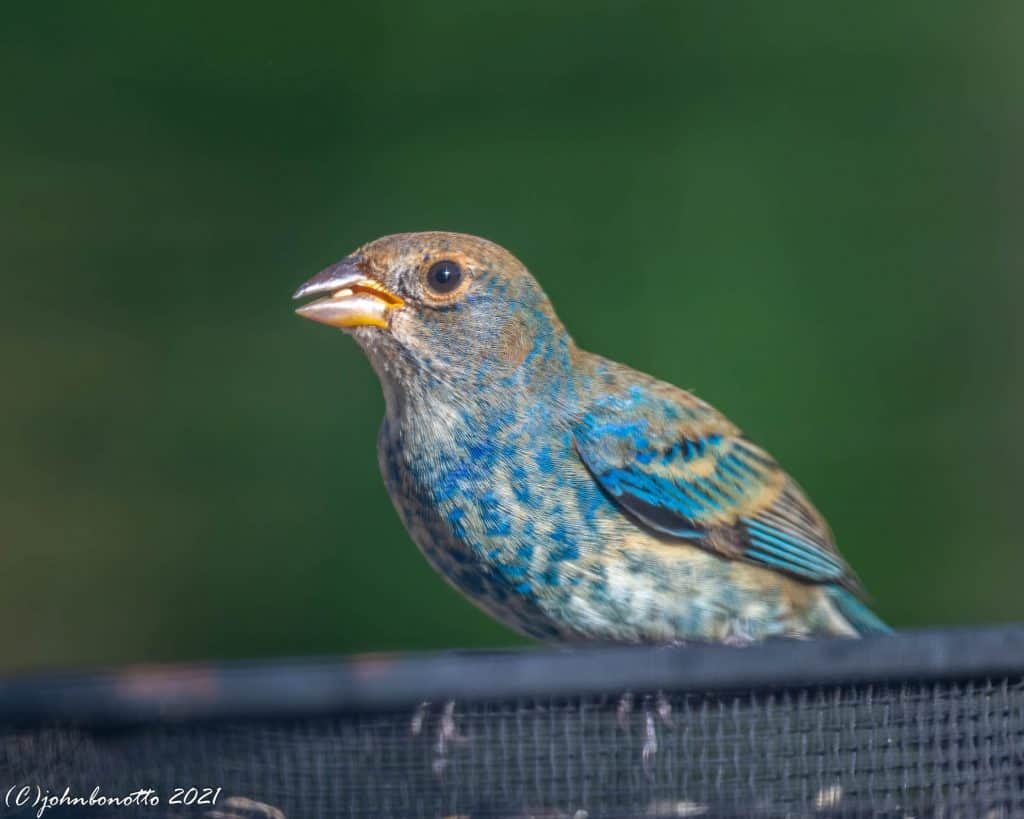
Indigo bunting couples will nest in a medium-large size, thick shrub, or young trees up to 3′ up. The nest itself is cup-shaped and built by the female from the tightly woven dried plant material and wrapped with a spider web. The inside is filled with soft material including animal fur, grasses, and small roots.
Generally, couples will have 1-3 broods per season with 3-4 eggs per brood – incubated solely by the female.
Eggs are white with a few brown spots and are .7″-.8″ long.
After 12-13 days the eggs hatch and fledglings leave the nest at about the 8-14 day mark.
Five Simple Ways to Attract Indigo Buntings to Your Yard
1. Get wiggly with Mealworms
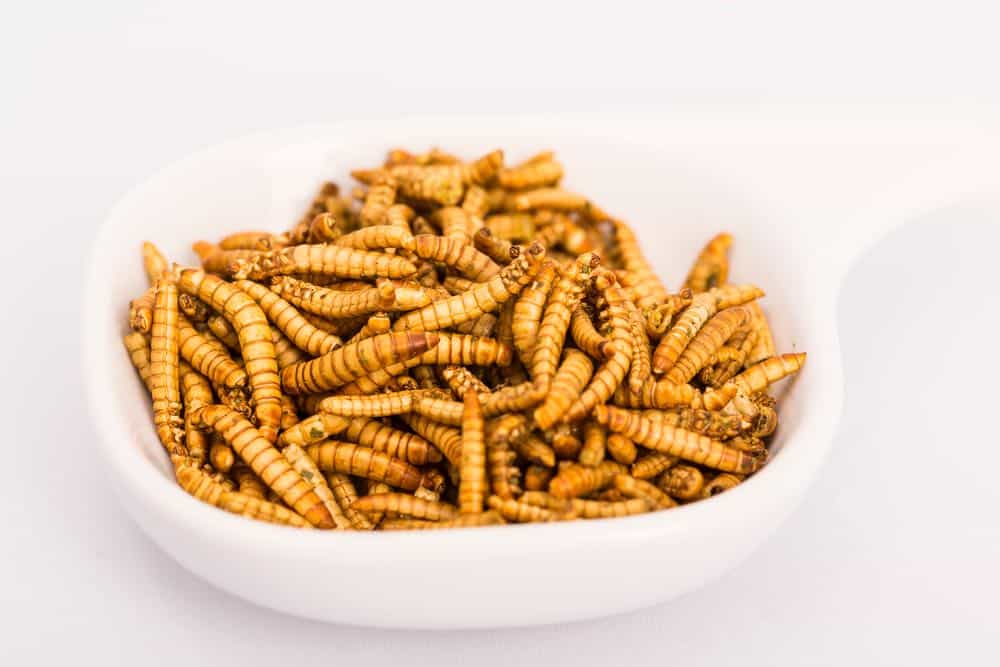
You can attract indigo buntings with mealworms. They’re actually the larvae of the mealworm beetle and since one of the indigo bunting’s favorite food is insects – this food is ideal and easy to offer.
Live mealworms are commonly available at your local nature store and dehydrated varieties are available online as well as at the local nature store.
Dehydrated mealworms last longer, require no maintenance, and are cheaper but sometimes take birds longer to realize they are actually food, delaying their visit to your yard.
Mealworms can be placed in a dish – just make sure the dish has sides when offering live ones otherwise they’ll climb out and escape!
2. Offer Small Seeds at the Feeder
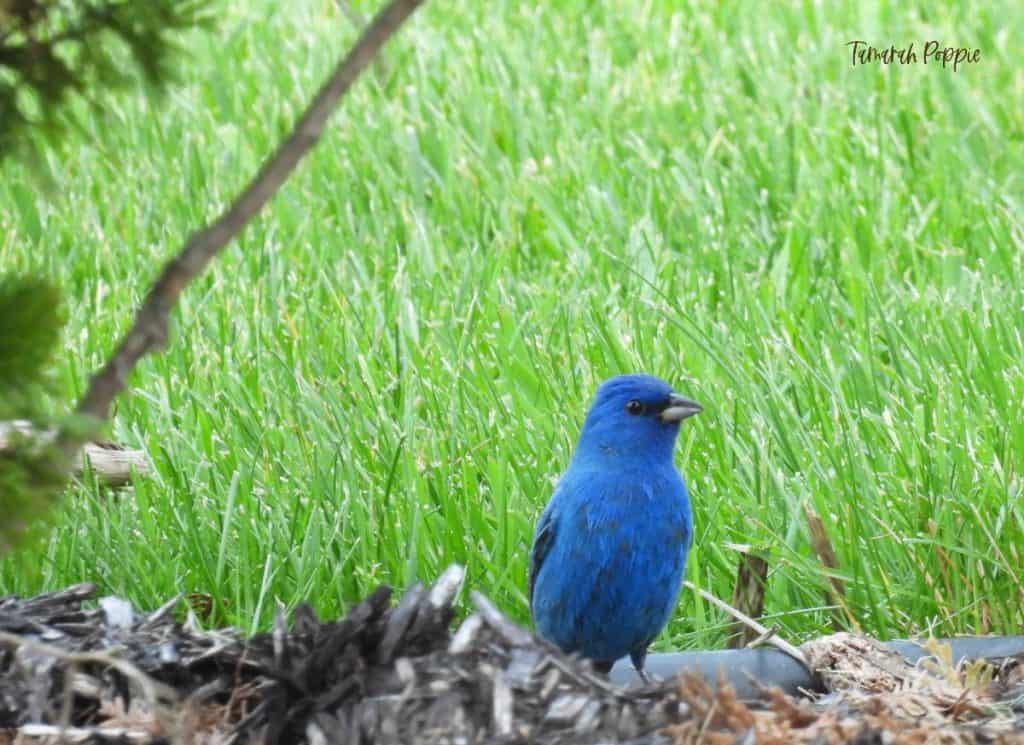
In the wild, this bird consumes small seeds. At the feeder, you can entice them with nyjer (often referred to as thistle) and white millet seeds. If some fall to the grounds it’s okay, indigo buntings are also ground feeders and will gladly indulge.
3. Have Water Available
All birds need water to drink and bathe in. Indigo buntings are no different. If a natural source of water is not available nearby consider installing a pond – even a small patio pond will attract wild birds.
A birdbath is another viable option. Birds are drawn to moving water so adding a fountain to the birdbath could increase your chances of attracting one.
4. Plant Native Fruit-Bearing Plants
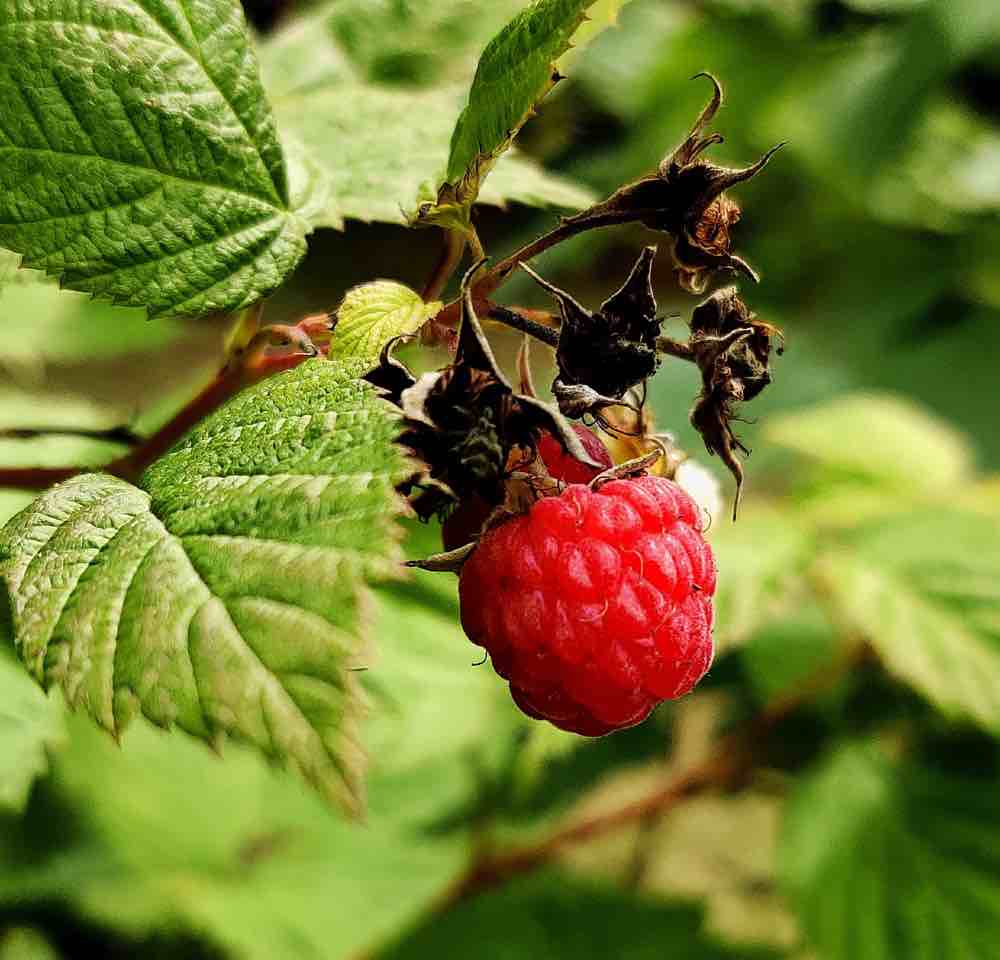
Native plants are particularly ideal because they don’t require special treatment to thrive. Non-native plants often require toxic fertilizers and pesticides which can kill birds. To attract indigo buntings in a responsible manner, avoid using chemicals.
During the fall and early spring when insects are scarce, many birds, including indigo buntings, rely on the fruit from trees & shrubs for substance.
Here are some ideas for native plants they’ll love:
- American Holly
- Black Cherry
- Pin Cherry
- Red Mulberry
- Blackberry
- Raspberry
- Chokeberry
- Chokecherry
- Elderberry
- Shadbush
- Snowberry
- Bayberry
- Highbush Cranberry
- Highbush blueberry
- Nannyberry
- Winterberry
5. Go Organic
Avoid using chemicals in and around your yards such as grass fertilizer and pesticides. Indigo buntings, and other wild birds, consume insects as their primary source of food and if you kill them off, there won’t be any to eat.
Equally horrible would be death by poisoning in the case of a wild bird eating a toxic insect!
Frequently Asked Questions
Are indigo buntings rare?
No. They are not rare. In fact, they are abundant in the geographic areas they live.
Is Indigo bunting a finch?
No. The indigo bunting is not a finch. They are actually a member of the cardinal family.
Conclusion
I think you’ll agree indigo buntings with their vibrant blue color are worth the effort to attract to your yard. Take and apply some of the tips I provided or if you’re really serious about attracting them to your yard – apply all of them! Good luck and happy birding!

